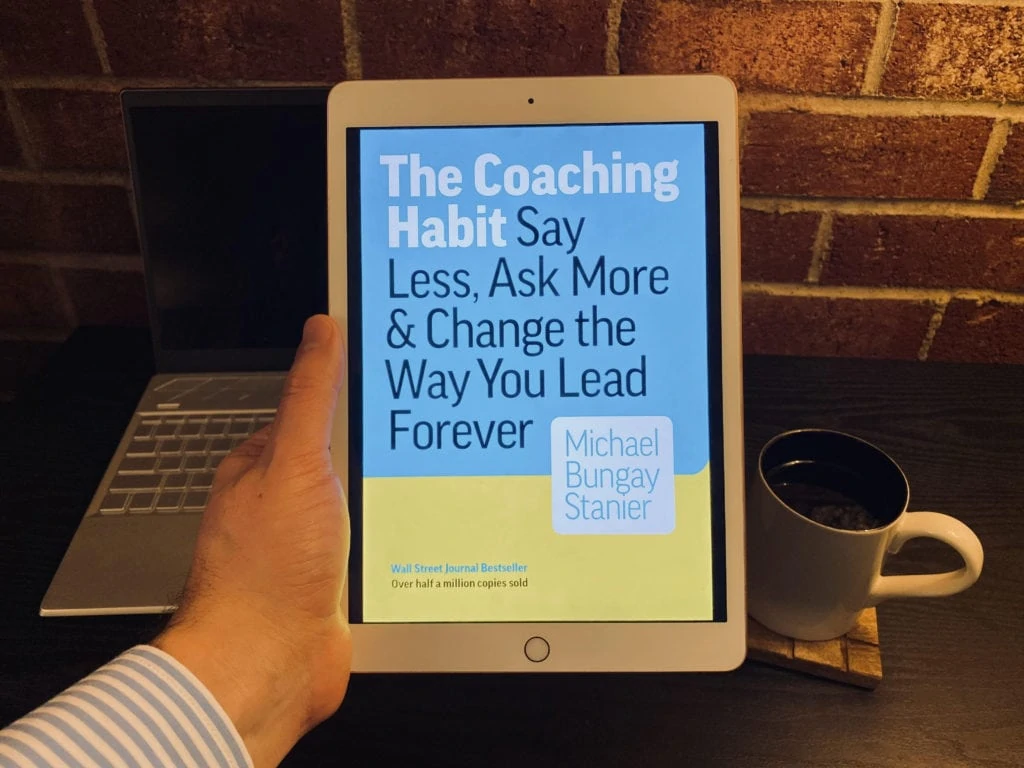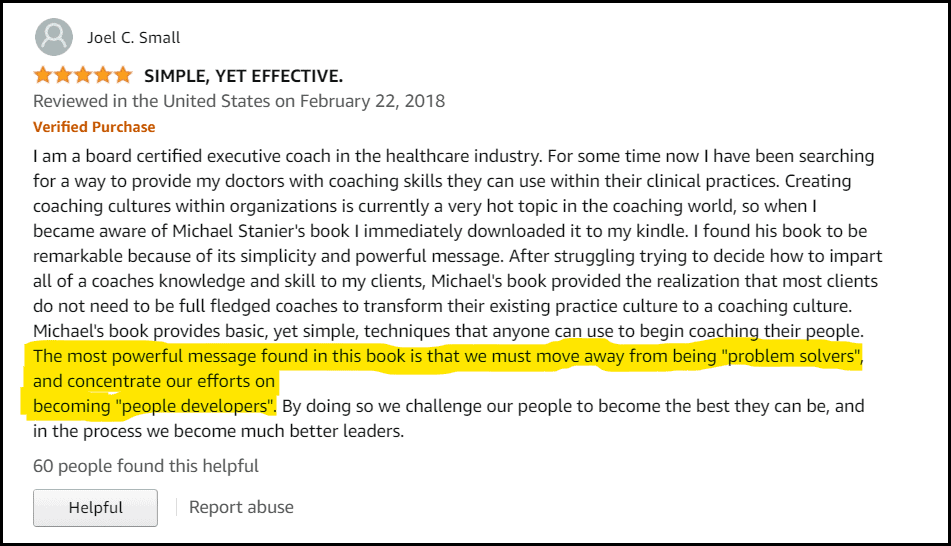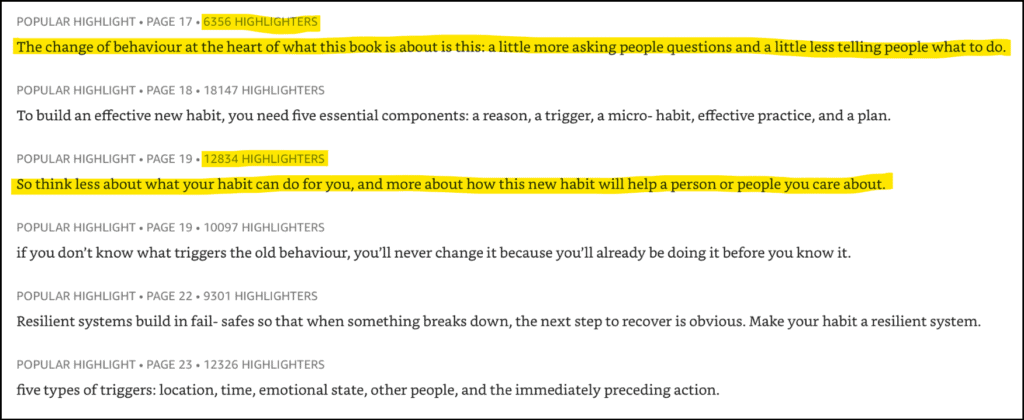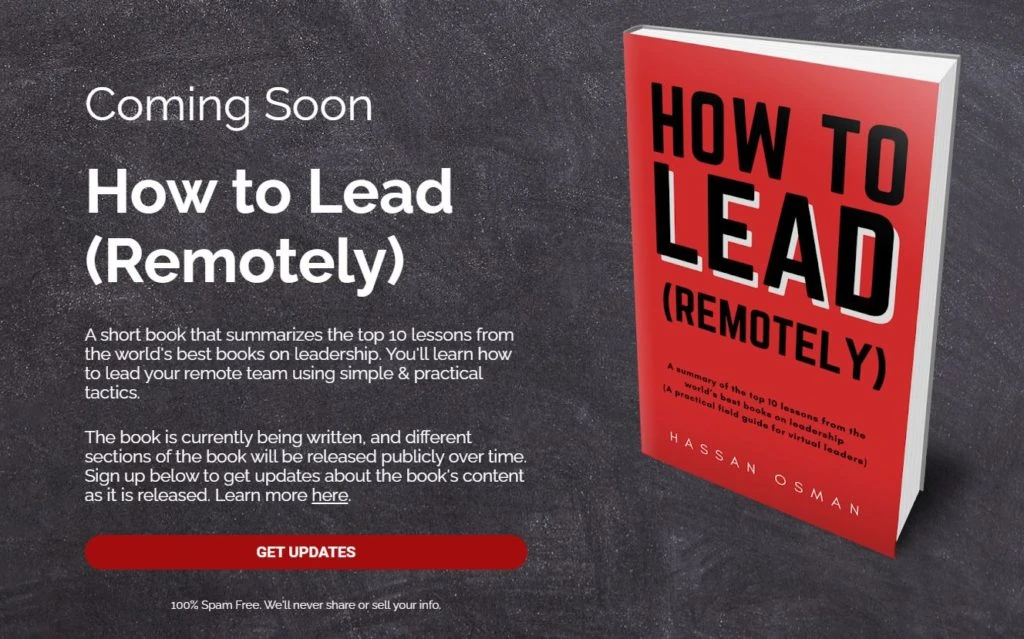
I’m writing a new book about remote leadership, and this is part of a series of posts that summarize some of the world’s best books on the topic. If you’d like to get an update every time I publish a new article, click here.
I recently finished reading “The Coaching Habit: Say Less, Ask More & Change the Way You Lead Forever” by Michael Bungay Stanier, and here are a few takeaways from the book that I found quite insightful.
The Coaching Habit: A Quick Summary
Leaders should coach their people because coaching positively impacts employee performance, company culture, and profitability.
Coaching also helps leaders address issues that typically result in overdependence, getting overwhelmed, and becoming disconnected.
One challenge is that many leaders don’t have a lot of time to spend on coaching. The book’s main idea is to help leaders build a coaching habit through a series of seven simple questions that don’t take up a lot of time.
Those questions can be used during one-on-one conversations with direct reports as well as in team settings. The book’s basic premise can be summed up in the following phrase: “a little more asking people questions and a little less telling people what to do.” It’s about building a habit of curiosity with people.
The concepts are mainly based on the author’s experience training thousands of managers through his organization, Box of Crayons.
The Coaching Habit: Basic Concepts
The book covers seven essential questions that leaders can use during their coaching conversations, which include the following:
- The Kickstart Question: What’s on your mind?
- The AWE Question: And what else?
- The Focus Question: What’s the real challenge here for you?
- The Foundation Question: What do you want?
- The Lazy Question: How can I help?
- The Strategic Question: If you’re saying Yes to this, what are you saying No to?
- The Learning Question: What was most useful for you?
Each question is discussed in a separate chapter and the author gives a set of best practices and tactics that a leader can use.
The Coaching Habit: Three Main Takeaways for Remote Leaders
Here are three main takeaways that I thought were quite insightful from the book, and some tactical applications that would apply to remote leaders.
#1 Coach for development (not performance)
Coaching for performance is about focusing on a particular problem. It’s about helping someone put out a fire.
Coaching for development is about focusing on the person who is dealing with the problem. It’s about helping someone learn how to deal with the fire.
Coaching for development is more powerful because it focuses on growth and improvement as opposed to pure problem-solving.
Tactical tip for remote leaders: Use a combination of the seven questions (listed above) to coach your employees on developing the critical thinking skills for problem-solving (instead of just giving them the answer they seek).
#2 Don’t rush to action
When someone presents a problem that they’re facing, it is rarely the actual problem that needs to be solved. Instead of rushing into action, slow down and ask thoughtful questions to solve the real problem (not just the first problem).
Tactical tip for remote leaders: When an employee faces a challenge and asks for feedback, try asking them Question 3 (The Focus Question: “What’s the real challenge here for you?”) in different ways to get to the root cause of the problem. For example, if someone emails you a list of issues they’re facing, you can respond with: “Before I jump into a longer reply, let me ask you: What’s the real challenge here for you?”
#3 Ask “And What Else?”
All seven questions in the book are important, but Question 2 (The AWE Question: “And What Else?“) is a crown jewel among them. According to Stanier, this question is considered “the best coaching question in the world” because it invites employees to share more options, which leads to better decisions. It’s also such a versatile question that can be added to any conversation.
Tactical tip for remote leaders: Sprinkle “And What Else?” in different conversations with your team members. You can also use it as a follow-up for any of the other questions. For example, “And what else is on your mind?” or “And what else is a real challenge for you?”
The Coaching Habit: Notable Reviews and Popular Highlights
The book is a Wall Street Journal Bestseller and is highly reviewed on Amazon, with over 4,400+ ratings that are generally positive.

Here’s one of the top reviews about the book, highlighting the point that leaders should move away from being “problem solvers” and focus more on being “people developers.”

And among the popular highlights, a unique feature in Amazon Kindle books that show what most people found helpful, here are a couple that complement the main takeaways.
You can click on the image to view a larger version

Would you like to get updates about other leadership books?
I’m writing a new book about remote leadership, and this is part of a series of posts that summarize some of the world’s best books on the topic.
If you’d like to get an update every time I publish a new book summary, click here.

